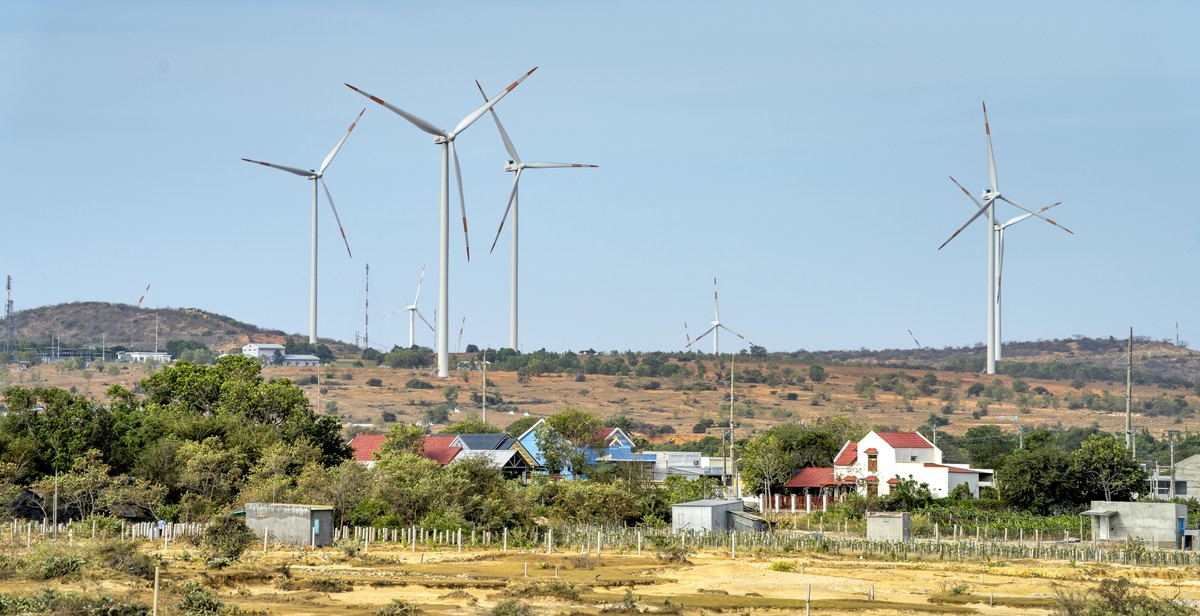Introduction
Welcome to the world of sustainable living! As environmental concerns continue to rise, more and more people are looking for ways to make their homes eco-friendly and reduce their carbon footprint. Creating a green oasis in your home not only helps protect the planet, but it also promotes a healthier and more sustainable lifestyle for you and your family.
In this article, we will explore various strategies and tips on how to transform your home into a green oasis. From energy-efficient appliances to eco-friendly materials, we will cover every aspect of sustainable living to help you create an environmentally-friendly haven.
By implementing green practices, you can significantly reduce your energy consumption, conserve water, improve indoor air quality, and minimize waste generation. Whether you are a homeowner, renter, or simply looking for ways to make your living space more sustainable, this article is for you.
Throughout this guide, we will provide you with practical solutions and actionable steps to incorporate sustainability into every area of your home. From the kitchen to the garden, we will explore eco-friendly practices, products, and technologies that can make a positive impact on the environment.
So, if you are ready to embark on a journey towards a greener lifestyle, let’s dive in and discover how to make your home a true green oasis.

Benefits of a Green Home
Reduced Environmental Impact
Opting for a green home can significantly reduce your environmental impact. By using sustainable materials and implementing eco-friendly practices, you can help conserve natural resources and reduce pollution. Green homes often incorporate renewable energy sources such as solar panels, which can further minimize reliance on fossil fuels and decrease carbon emissions.
Improved Indoor Air Quality
One of the major benefits of a green home is improved indoor air quality. Traditional homes can accumulate harmful chemicals from paints, cleaning products, and furniture, leading to health issues. Green homes, on the other hand, prioritize non-toxic materials and proper ventilation systems, ensuring cleaner and fresher air for you and your family.
Energy Efficiency
Green homes are designed to be energy-efficient, resulting in lower utility bills and reduced carbon footprint. These homes often feature energy-saving appliances, LED lighting, and efficient insulation to minimize heat loss or gain. Additionally, green homes utilize smart technology to optimize energy usage, allowing homeowners to monitor and control their energy consumption more effectively.
By embracing a green home, you can contribute to a more sustainable future while enjoying the numerous benefits it offers. The reduced environmental impact, improved indoor air quality, and energy efficiency make green homes a wise choice for both the planet and your well-being.

Sustainable Building Materials
When it comes to creating a green oasis in your home, choosing sustainable building materials is essential. Not only do these materials reduce your carbon footprint, but they also promote a healthier living environment for you and your family. Here are some eco-friendly options to consider:
Eco-friendly Flooring Options
Traditional flooring materials can contain harmful chemicals and contribute to deforestation. Opt for sustainable alternatives such as bamboo, cork, or reclaimed wood. Bamboo grows quickly and is a renewable resource, while cork is harvested from the bark of cork oak trees without causing harm to the tree. Reclaimed wood gives a second life to old wood, reducing the need for new timber.
Non-toxic Paints and Finishes
Conventional paints and finishes release volatile organic compounds (VOCs) that can pollute the air indoors. Choose low or zero VOC paints and finishes made from natural ingredients like clay, milk protein, or plant oils. These alternatives are non-toxic and have a minimal impact on indoor air quality.
Recycled and Upcycled Furniture
Instead of buying new furniture, consider using recycled or upcycled pieces. Look for furniture made from reclaimed materials, such as recycled plastic or reclaimed wood. Upcycling involves transforming old furniture into something new and stylish, reducing waste and saving resources.
By incorporating these sustainable building materials into your home, you can create a green oasis that is not only visually appealing but also environmentally friendly.

2. Energy Efficiency
Creating an energy-efficient home is not only beneficial for the environment but also for your wallet. By implementing various energy-saving techniques and technologies, you can significantly reduce your energy consumption and carbon footprint. Here are some key strategies to make your home more energy-efficient:
Insulation and Weatherproofing
Proper insulation and weatherproofing are essential for maintaining a comfortable indoor temperature and reducing energy waste. Seal any gaps or cracks in doors, windows, and walls to prevent air leakage. Additionally, consider adding insulation to your attic, walls, and floors to improve thermal efficiency.
Energy-efficient Appliances
Replace outdated appliances with energy-efficient models to save both energy and money. Look for appliances with the ENERGY STAR label, which signifies that they meet strict energy efficiency guidelines. Upgrade to energy-efficient refrigerators, washing machines, dishwashers, and HVAC systems to significantly reduce your energy consumption.
Solar Panels and Renewable Energy
Installing solar panels on your roof is an excellent way to generate clean, renewable energy and reduce your reliance on fossil fuels. Solar power can provide electricity for your home and even allow you to sell excess energy back to the grid. Explore other renewable energy options such as wind turbines or geothermal systems to further enhance your home’s energy efficiency.
By implementing these energy-efficient measures, you can create a green oasis in your home while simultaneously reducing your environmental impact and saving money on energy bills.

3. Water Conservation
Water conservation is an essential aspect of creating a green oasis in your home. By implementing various water-saving techniques, you can significantly reduce your water consumption and contribute to a sustainable environment.
Low-flow Fixtures
One effective way to conserve water is by installing low-flow fixtures in your home. Low-flow toilets, showerheads, and faucets are designed to use less water without compromising on performance. These fixtures can reduce water usage by up to 50%, resulting in significant water savings over time.
Rainwater Harvesting
Rainwater harvesting is another eco-friendly method to conserve water. By collecting rainwater from your roof, you can use it for various purposes such as watering your plants, cleaning, and even flushing toilets. Installing a rain barrel or a more complex rainwater harvesting system can help you utilize this free and abundant resource efficiently.
Drought-resistant Landscaping
Creating a drought-resistant landscape is not only visually appealing but also helps conserve water. Choose native plants that are adapted to your region’s climate and require less water to thrive. Incorporate mulching to retain moisture in the soil and reduce evaporation. Additionally, consider using efficient irrigation systems like drip irrigation to minimize water waste.
By implementing these water conservation techniques, you can make a significant impact on preserving our planet’s precious water resources while creating a green oasis in your home.

4. Indoor Air Quality
Indoor air quality plays a crucial role in creating a healthy and green oasis within your home. Here are some tips to ensure clean and fresh air indoors:
Natural Ventilation
One of the simplest ways to improve indoor air quality is through natural ventilation. Open windows and doors to allow fresh air to circulate throughout your home. This helps remove pollutants and odors and brings in a constant supply of oxygen.
Air Purifying Plants
Another effective method to enhance indoor air quality is by incorporating air purifying plants into your home. Plants such as peace lilies, spider plants, and pothos are known for their ability to filter toxins and release oxygen. These plants not only add beauty but also contribute to a healthier living environment.
Avoiding Harmful Chemicals
Many household products contain harmful chemicals that can negatively impact indoor air quality. To create a green oasis, opt for natural and eco-friendly alternatives. Look for cleaning products, paints, and furniture that are labeled as non-toxic and low in volatile organic compounds (VOCs). These choices will help minimize the release of harmful substances into the air.
By implementing these indoor air quality measures, you can ensure that your home remains a healthy and green sanctuary for you and your loved ones.

5. Waste Reduction and Recycling
Reducing waste and recycling are essential steps in creating a sustainable home environment. By implementing simple practices like composting, participating in recycling programs, and reducing single-use plastics, you can greatly contribute to waste reduction and promote a greener lifestyle.
Composting
Composting is an effective way to reduce food waste and create nutrient-rich soil for your garden. Start by setting up a compost bin in your backyard or using a composting service in your area. Compost food scraps, yard waste, and paper products like coffee filters and napkins. Avoid composting meat, dairy products, and oily foods, as they can attract pests.
Recycling Program
Participate in your local recycling program to ensure that recyclable materials are properly disposed of. Familiarize yourself with the recycling guidelines in your area, and sort your waste accordingly. Rinse out containers and remove any non-recyclable components, such as caps or lids, before placing them in the recycling bin. Remember to recycle paper, plastic, glass, and metal products whenever possible.
Reducing Single-use Plastics
Single-use plastics contribute significantly to environmental pollution. Minimize your use of plastic by opting for reusable alternatives. Invest in reusable shopping bags, water bottles, and food containers. Avoid purchasing products with excessive plastic packaging and choose sustainable options instead. By reducing single-use plastics, you can significantly decrease your household waste and contribute to a cleaner environment.
Conclusion
Creating a green oasis in your home is not only beneficial for the environment but also for your overall well-being. By implementing eco-friendly practices and incorporating sustainable materials, you can reduce your carbon footprint and create a healthier living space.
Start by assessing your energy consumption and making small changes such as switching to energy-efficient appliances and using LED light bulbs. Additionally, consider installing solar panels to harness renewable energy and reduce your reliance on non-renewable sources.
When it comes to water conservation, opt for low-flow fixtures and consider collecting rainwater for irrigation purposes. Incorporating indoor plants not only improves air quality but also adds a touch of natural beauty to your home. Choose plants that are suitable for your climate and require minimal maintenance.
When renovating or decorating your home, choose sustainable materials such as bamboo flooring, reclaimed wood, and natural paints. These options are not only eco-friendly but also durable and aesthetically pleasing.
Lastly, don’t forget to recycle and compost to reduce waste. Implement a proper waste management system and educate your family members about the importance of recycling and reducing waste.
By following these steps, you can transform your home into a green oasis that promotes sustainability, health, and well-being. Embrace the green lifestyle and make a positive impact on the environment, one eco-friendly choice at a time.
